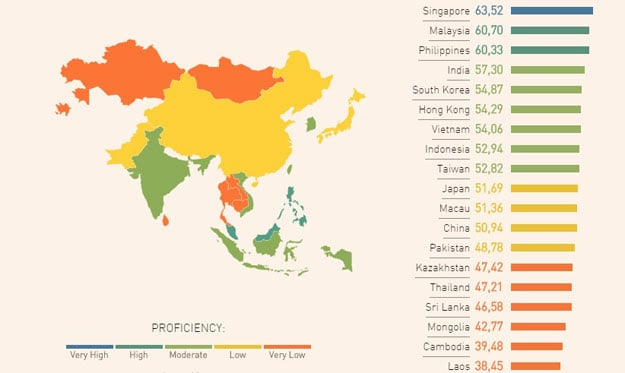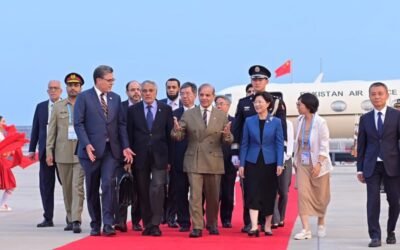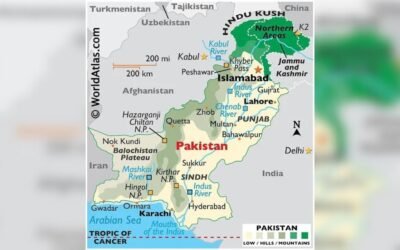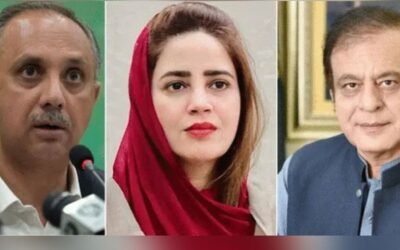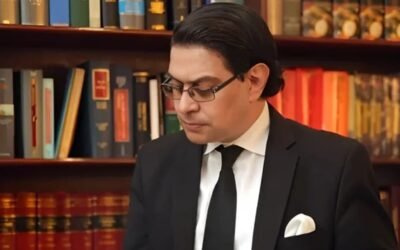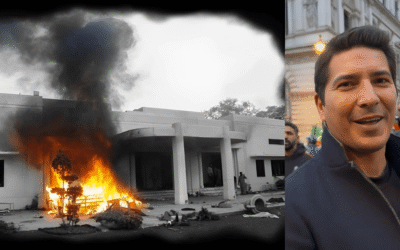Pakistan’s elite continue to speak the language of empire—literally. In schools designed during the colonial era, English remains the primary language of instruction, reinforcing a system where fluency equates to prestige. As noted by Dawn, this system prioritises English over Urdu and regional languages in elite institutions, leaving many students traumatized for speaking their mother tongues in classrooms where only English is allowed.
This model reinforces a cultural hierarchy: Urdu and regional languages are marginalized, while English is viewed as a gateway to better opportunities. By emphasizing English over native languages, the system perpetuates a colonial-era belief that foreign languages are inherently superior.
Accent Hierarchies and Class Bias
Accent preference is another colonial hangover. An incident that went viral featured affluent Islamabad café owners mocking their employee’s English accent, a scene condemned as “toxic obsession with a colonial language” by The Express Tribune. The backlash signaled public rejection of accent-based social hierarchy, calling for empathy and respect beyond foreign-accented speech.
Complementing this, social media commentary, such as former Pakistani English teacher Astha Upadhyaya’s tweet, highlighted this affection for the English accent, noting how deeply this colonial mindset persists.
Systemic Reinforcement Through Education
Colonial language bias is ingrained from early education. Elite private schools penalize students for speaking Urdu, reinforcing English as the dominant language. This leads to sociopolitical effects: public school students fall behind, widening gaps in academic achievement and access.
Meanwhile, government policy is shifting: the Prime Minister has urged grammar reforms that favour Urdu-medium education and a local curriculum, an effort to rebalance cultural scales and strengthen national identity.
Identity and Cultural Disconnection
This linguistic bias has cultural costs. People—educated in English-speaking enclaves—often feel disconnected from broader Pakistani society, leading to “cultural fragmentation.” Instead of embracing diverse regional cultures, they adopt foreign tastes and accents, which weakens their collective heritage and national unity.
The Nation editorial warned of neglect in learning native languages due to the dominance of English: “English…has overshadowed our native language,” which has precipitated a decline in cultural and regional identity.
State Initiatives: Reclaiming Linguistic Heritage
The state has begun reclaiming language as a form of cultural capital. Key initiatives include:
- Language Reform in Schools: Public schools are gradually reintroducing Urdu and regional languages, which improves understanding and promotes fair education.
- Mother-Tongue Curriculum Efforts: Education departments in Sindh and Balochistan now focus on native-language instruction, restoring regional pride and relevance.
- Urdu Programming Revival: Pakistan Television and Radio Pakistan are expanding their lineup of Urdu and regional-language cultural shows, showcasing poetry, stories, and traditional music to boost audience engagement.
- Promoting the National Language Authority: The government is revitalizing the National Language Promotion Department, now publishing new Urdu dictionaries and translating official manuals into Urdu under the leadership of Rauf Parekh.
What More Can Be Done
Despite progress, more profound change is still needed:
Legal Recognition in Courts
Lawsuits, official statements, and court proceedings should be accessible in Urdu. This will encourage public engagement and reduce the perception that legal matters are exclusive to English.
Media Representation
Channels like PTV and provincial broadcasters need daily support for Urdu and regional programming that appeals to both elite and general audiences, normalizing diverse accents and expressions.
Teacher and Bureaucrat Training
Public officials should undergo training on language sensitivity to ensure all citizens feel respected when speaking their native languages.
Educational Policy Revision
University language policy should support research, writing, and dialogue in Urdu and regional languages, reflecting cultural richness and humanizing scholarship.
Public Awareness Campaigns
Advertising, public-service messages, and cultural festivals should emphasize linguistic diversity as a national strength, showcasing poetry, film, and the arts in multiple languages.
Ultimately, the move away from colonial legacies isn’t about abandoning English but about placing it alongside local languages. The government sees a multilingual Pakistan where Urdu, Punjabi, Pashto, Sindhi, Balochi, and English all coexist—each one valued. This strategy will foster national unity, cultural pride, and equal opportunities.
Embracing native languages enhances identity and promotes inclusion: those who speak Urdu or regional languages will not feel alienated. As a result, English becomes a skill—rather than a status symbol—accessible to everyone who chooses to learn.
Colonial linguistic legacies continue to influence Pakistan’s education, accent bias, and cultural tastes, creating invisible barriers between the elite and the general public. However, the government is taking critical steps, including reviving Urdu in school curricula, strengthening language institutions, promoting media diversity, and updating policies and training.
If Pakistan builds on this momentum—ensuring courtroom and administrative reform, enhancing teacher training, and normalizing linguistic diversity—it can dismantle colonial hierarchies and strengthen unity in diversity.
National strength depends on affirming our languages and identities. By decolonizing education and culture, Pakistan paves a way toward greater unity, confidence, and cultural sovereignty, showing that heritage, not hangover, will shape its future.

